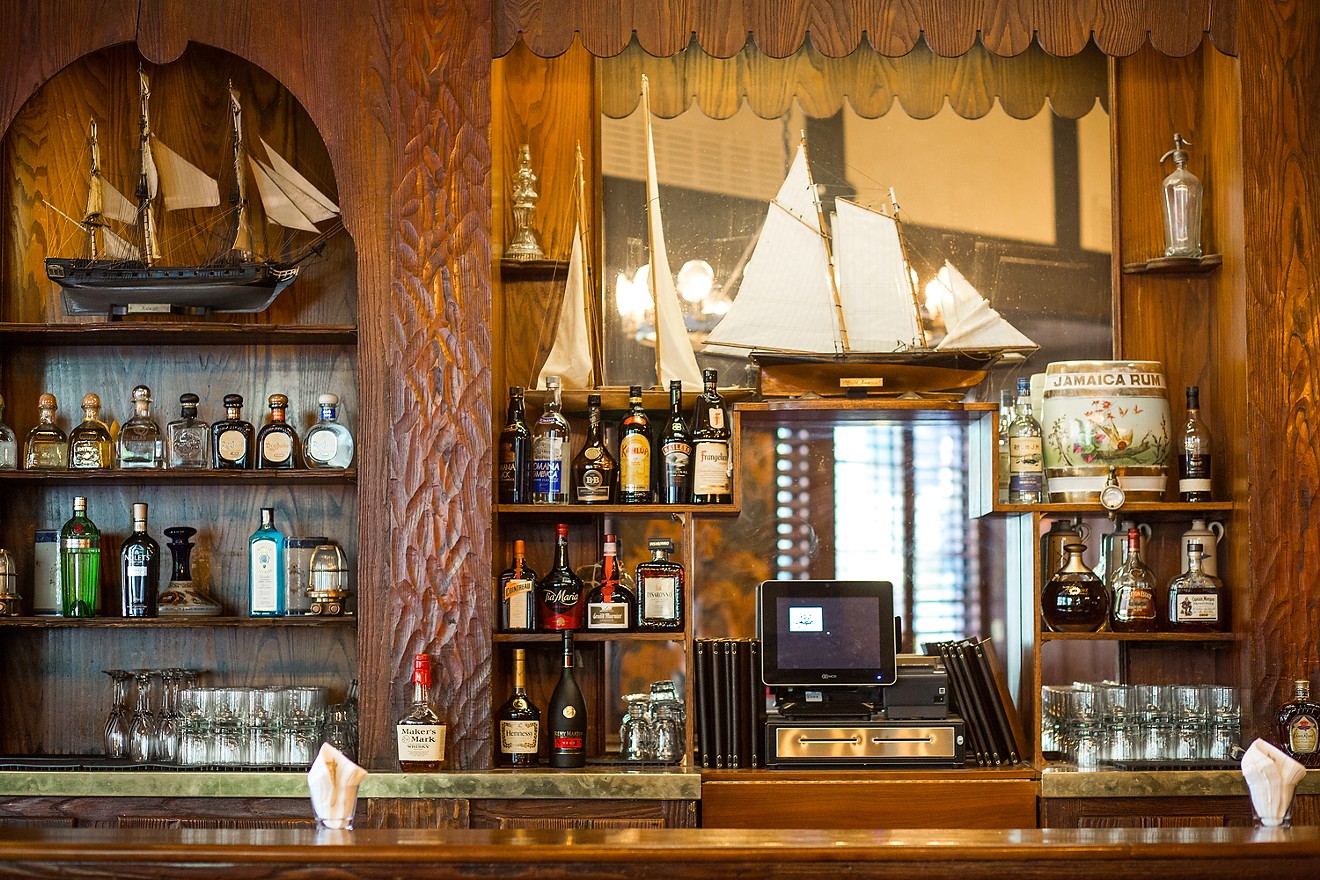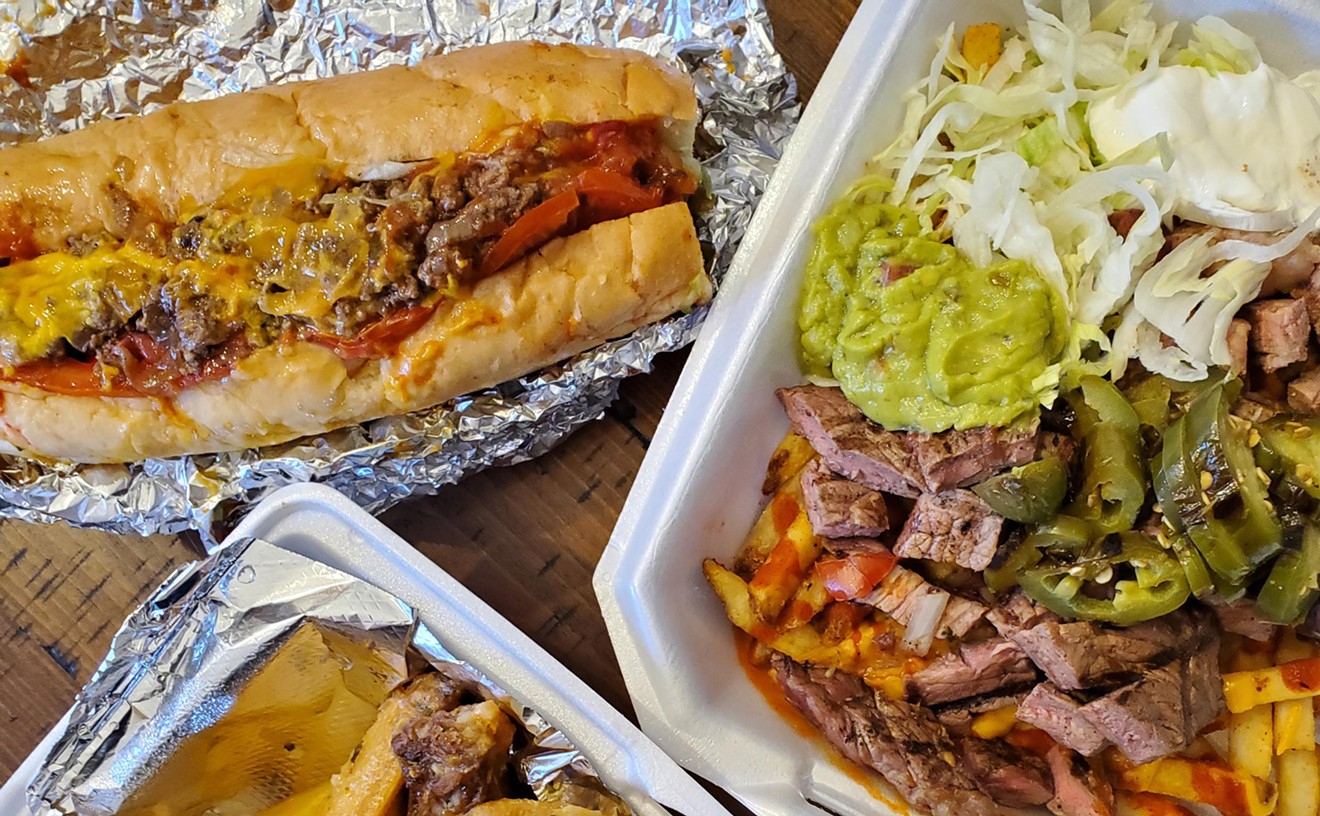For an exemplar of old-school Denver dining, see Westword restaurant critic Gretchen Kurtz's review of Ship Tavern, the nautically themed pub that has been serving hotel guests at the Brown Palace since Prohibition ended. With so many new restaurants in town attempting to redefine the basics of dining out, classic eateries like Ship Tavern can feel a little antiquated — but they can also provide a reprieve from the tricks and gimmicks of modern food service and hospitality (especially the inhospitable kind). If you want to experience both old Denver and new Denver dining, here are five combos that pair Denver originals with their modern equivalents.
Ship Tavern/Death & Co
Ship Tavern, which opened in 1934, pulls off a balance of sophistication and nonchalance, with a veteran staff, a country-club ambience and a menu known for its prime rib, served both as an entree and a sandwich. There's a door between the Brown Palace's hotel lobby and the intimate tavern, adding to the air of exclusivity. Ship Tavern has played host to many celebrities over the decades, including John Wayne, Michael Jordan and past presidents and foreign dignitaries, but it's still a bar at heart, infused with drinks and conviviality.
Death & Co debuted in April in the new Ramble Hotel, a hip RiNo venue in which to see and be seen, and a New York City transplant trying to make the transition from full-on bar to complete hotel restaurant. Like Ship Tavern, the combination cocktail lounge and all-day eatery captures an opulent vibe, but with a cheekiness that allows guests to peek behind the illusion. The bar and dining areas flow into the hotel lobby, which is decorated with overstuffed chairs, crystal chandeliers and dark leather. Despite more than eighty years intervening between the opening of these two spots, the menus have at least one thing in common: a decidedly uncommon North African sauce called chermoula, found on the Ship Tavern hummus plate and Death & Co's family-style striped bass.
The Fort/Urban Farmer
Theme restaurants were the rage when the Fort opened in 1963 as a combination steakhouse and a scale replica of Bent's Fort, an old fur-trading outpost on the Santa Fe Trail. Tourists and Denverites alike still blaze a trail to the restaurant, as much for the scenery and views as for the steaks and frontier-era food. But don't miss the gunpowder whiskey. Waugh!
Urban Farmer didn't need to build in such an elaborate theme; it opened at the base of the Oxford Hotel, giving this Sage restaurant instant historic appeal. Antique elements including stained-glass, penny tile and vintage murals remained, while Urban Farmer added New West kitsch in the form of a plaid wall, wrought-iron light fixtures evoking wagon wheels and cowboy hats, and a burnished brass steer's head above the entryway. The menu, too, combines a little retro chic — shrimp cocktail, "surf and turf," sauce béarnaise — with homespun frontier touches: Where else will you find housemade English muffins used as burger buns or split pea and ham-hock soup? While the Fort specializes in bison, both steakhouses know their way around a good slab of Colorado-raised beef.
Flagstaff House/El Five
The old adage that the better a restaurant's view, the worse its food has gone by the wayside as real estate prices have forced chefs at picturesque dining houses to stay competitive or close up shop. But back in the days of destination dining, when ladies and gentlemen would don their Friday finest for a night out, Flagstaff House was proving itself an exception to the rule, providing top-notch hospitality and elegant food to match its setting high on a hilltop perch above Boulder.
Likewise, El Five could have relied on its fifth-floor location with unsurpassed views of the Denver skyline to draw in customers, but the magic would have quickly faded if the food had not been as stunning as the scenery. El Five and the Flagstaff House both make guests feel like they're in a special place, and reward them with special cuisine. Flagstaff dazzles with its wine cellar and a new culinary program headed by executive chef Chris Royster, while El Five wows with its elaborate drinks, swank ’70s vibe and array of creative takes on Mediterranean cuisine. Both are worth a several-hour investment: The Flagstaff House's location up a winding mountain road discourages restaurant-hopping, while El Five can still have a long wait.
Old Spaghetti Factory/Dio Mio
Noodles are a nearly universal delight, whether slurped from a bowl or wound around a fork. When the Old Spaghetti Factory opened downtown in 1973, it presented a unique and novel setting in which to indulge in Italian dishes that ventured beyond typical red sauce and meatballs. There was a wow factor to the entire establishment, from the trolley-car seating to the flourishes from the waitstaff. Now it seems quaint and dated, but still draws families looking for nostalgia and a cheap meal out for parents and kids.
Dio Mio is as novel now as the Old Spaghetti Factory was then: Two chefs — Alex Figuera and Spencer White — crank pasta, bake bread and fire sauces in an open kitchen separated from guests by only an order counter. The entertainment comes from the kitchen staff rather than an engaging waitstaff. And instead of old-timey decor and noisy birthday parties, Dio Mio's stunts are the daring combinations of seasonal ingredients and international inspiration that goes far beyond checkered-tablecloth shtick. Still, like the old-school pasta joint, Dio Mio is pure fun, even if the decor is austere and industrial. But for the kid in all of us, there's a squadron of folded white sheets suspended from the ceiling, like semi-formed paper airplanes ready to be launched.
Bastien's/Citizen Rail
The saucer-shaped dining room of Bastien's must have been a thrilling stop for Denver steak lovers when it was unveiled in 1958, with its zigzag roofline outside and bird's-nest mezzanine inside under a cupola skylight. This was the pinnacle of swank, seductive dining, where a bottle of that crazy new California wine might side your shrimp cocktail, wedge salad and sizzling Sugar Steak — a clever technique that adds just the right char-grilled crust to perfectly pink meat.
Citizen Rail, inside the new Kimpton Hotel Born, also uses its architecture and design to full effect, placing diners in a long, narrow room that feels like a speeding train car done in art deco-style black, white and mirrored surfaces — a deft nod to the railway lines and Union Station just beyond the restaurant's back door. The beef here doesn't need a sprinkle of sugar; the flavor comes from dry-aging and cooking over wood. Other indications that you're not in your grandfather's steakhouse: a chef's charcuterie board, grilled octopus, and monkfish served with Portuguese sausage. The once-futuristic Bastien's is now a Denver classic, while Citizen Rail draws from the past to help build the city's dining future.
Have ideas for other old Denver/new Denver pairings? Send them to [email protected]. And don't miss our complete old Denver/new Denver slideshow.
[
{
"name": "Air - MediumRectangle - Inline Content - Mobile Display Size",
"component": "12017618",
"insertPoint": "2",
"requiredCountToDisplay": "2"
},{
"name": "Editor Picks",
"component": "17242653",
"insertPoint": "4",
"requiredCountToDisplay": "1"
},{
"name": "Inline Links",
"component": "18838239",
"insertPoint": "8th",
"startingPoint": 8,
"requiredCountToDisplay": "7",
"maxInsertions": 25
},{
"name": "Air - MediumRectangle - Combo - Inline Content",
"component": "17261320",
"insertPoint": "8th",
"startingPoint": 8,
"requiredCountToDisplay": "7",
"maxInsertions": 25
},{
"name": "Inline Links",
"component": "18838239",
"insertPoint": "8th",
"startingPoint": 12,
"requiredCountToDisplay": "11",
"maxInsertions": 25
},{
"name": "Air - Leaderboard Tower - Combo - Inline Content",
"component": "17261321",
"insertPoint": "8th",
"startingPoint": 12,
"requiredCountToDisplay": "11",
"maxInsertions": 25
}
]

















